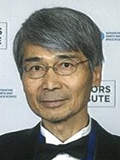Kimitaka Kawamura

Commendation
For developing methods for analyzing polar organic aerosols in the atmosphere and elucidating the origin, transport, and transformation processes of organic molecules in the atmosphere
A list of five representative papers
- Kawamura, K. and I. R. Kaplan (1984), Capillary gas chromatography determination of volatile organic acids in rain and fog samples, Anal. Chem., 56, 1616-1620.
- Kawamura, K. and R. B. Gagosian (1987), Implications of ω-oxocarboxylic acids in the remote marine atmosphere for photo-oxidation of unsaturated fatty acids, Nature, 325, 330-332.
- Kawamura, K., K. Ikushima (1993), Seasonal changes in the distribution of dicarboxylic acids in the urban atmosphere, Environ. Sci. & Technol., 27, 2227-2235.
- Kawamura, K., H. Kasukabe, and L. A. Barrie (1996), Source and reaction pathways of dicarboxylic acids, ketoacids and dicarbonyls in arctic aerosols: one year of observations, Atmos. Environ., 30, 1709-1722.
- Cong Z., K. Kawamura, S. Kang, and P. Fu (2015), Penetration of biomass-burning emissions from South Asia through the Himalayas: new insights from atmospheric organic acids, Scientific Reports, 5, 9580.
Major achievements
Dr. Kawamura was the first in the world to develop analytical techniques for studying polar organic compounds in atmospheric aerosols, and he applied them to elucidate their abundance, source, and sinks in aerosols, precipitation, sediments, and ice cores. Most notably, in the 1980s, when knowledge of atmospheric organic matter was limited, he developed methods for measuring low-molecular-weight organic matter in the atmosphere and precipitation and identified the major organic constituents in the gas and aerosol phases. Subsequently, he has pioneered studies on the compositional analysis of organic aerosols in urban, polar, and oceanic regions, and he has played a leading role in the evaluation of the impact of organic aerosols on climate. He has also actively identified unknown compounds by mass spectrometry, discovered dicarboxylic acids in marine aerosols, and widely expanded understanding of photochemical oxidation of unsaturated fatty acids and the formation and transformation mechanisms of water-soluble organic aerosols. These studies have led to the development of novel paleoenvironmental reconstructions using organic molecules in ice core samples as tracers.
Nominator
Hajime Akimoto
